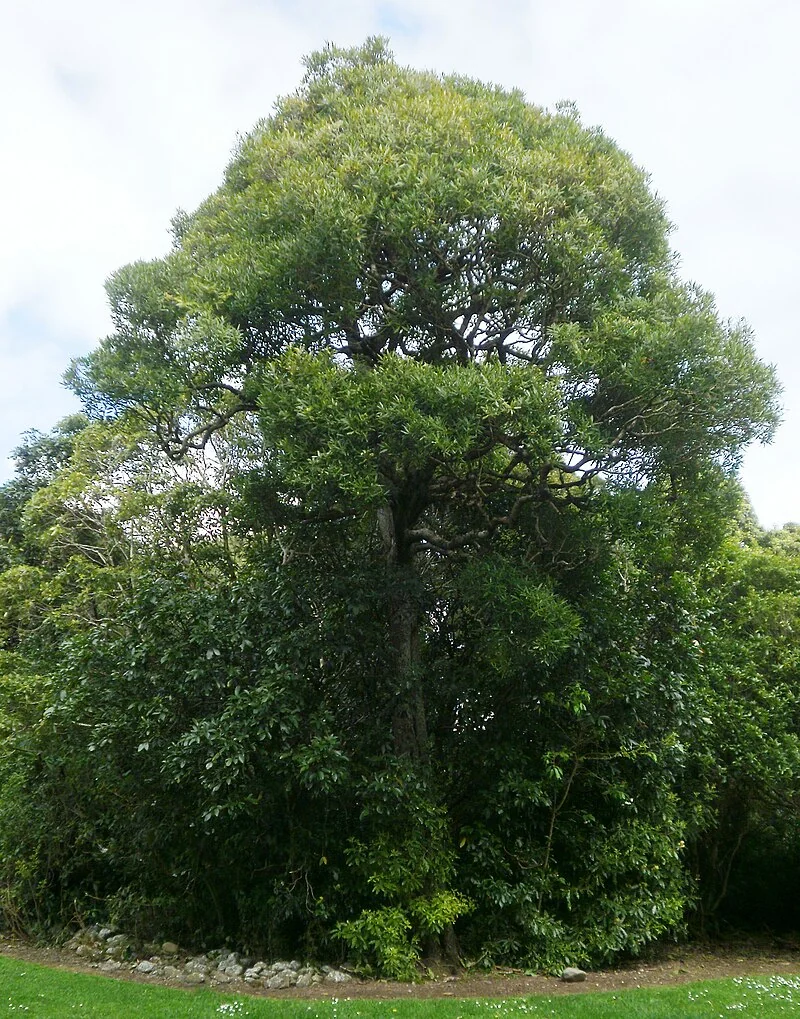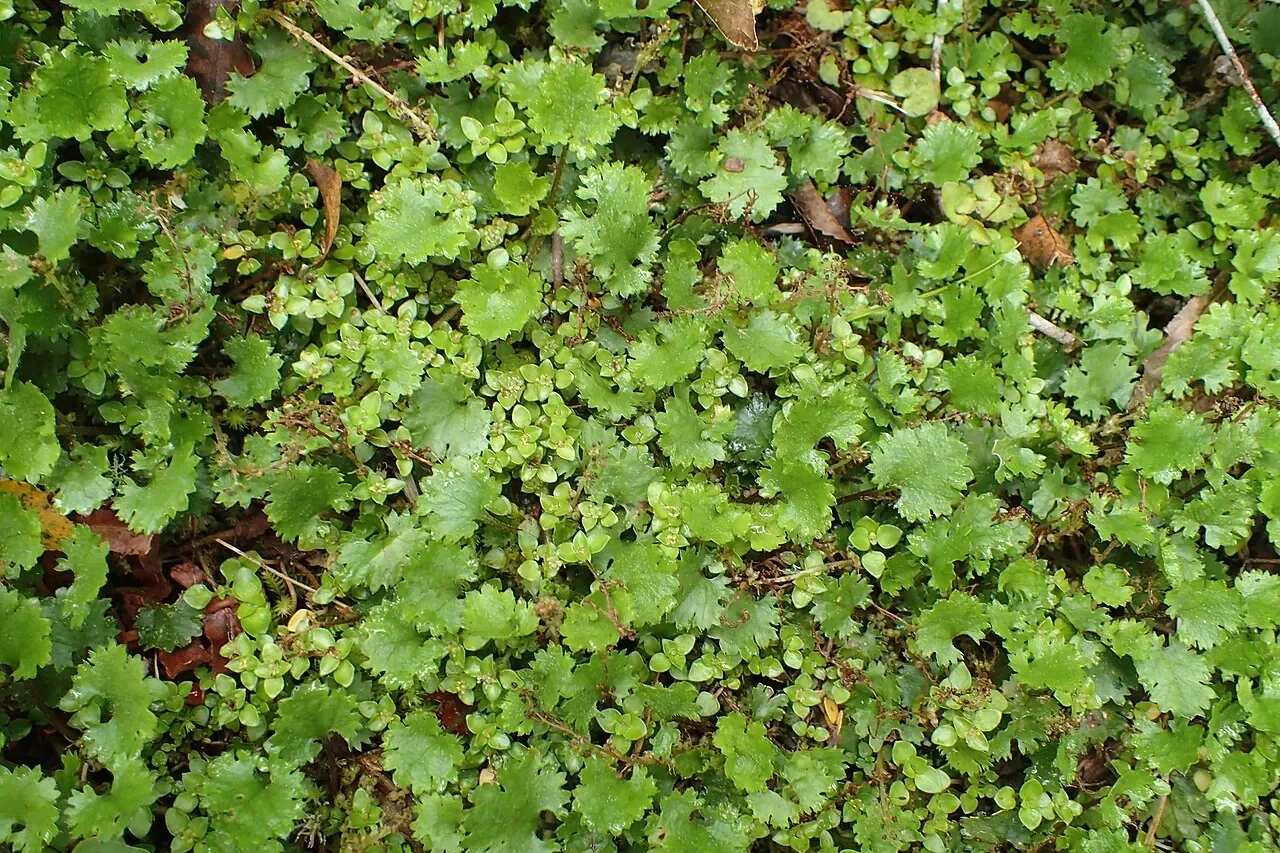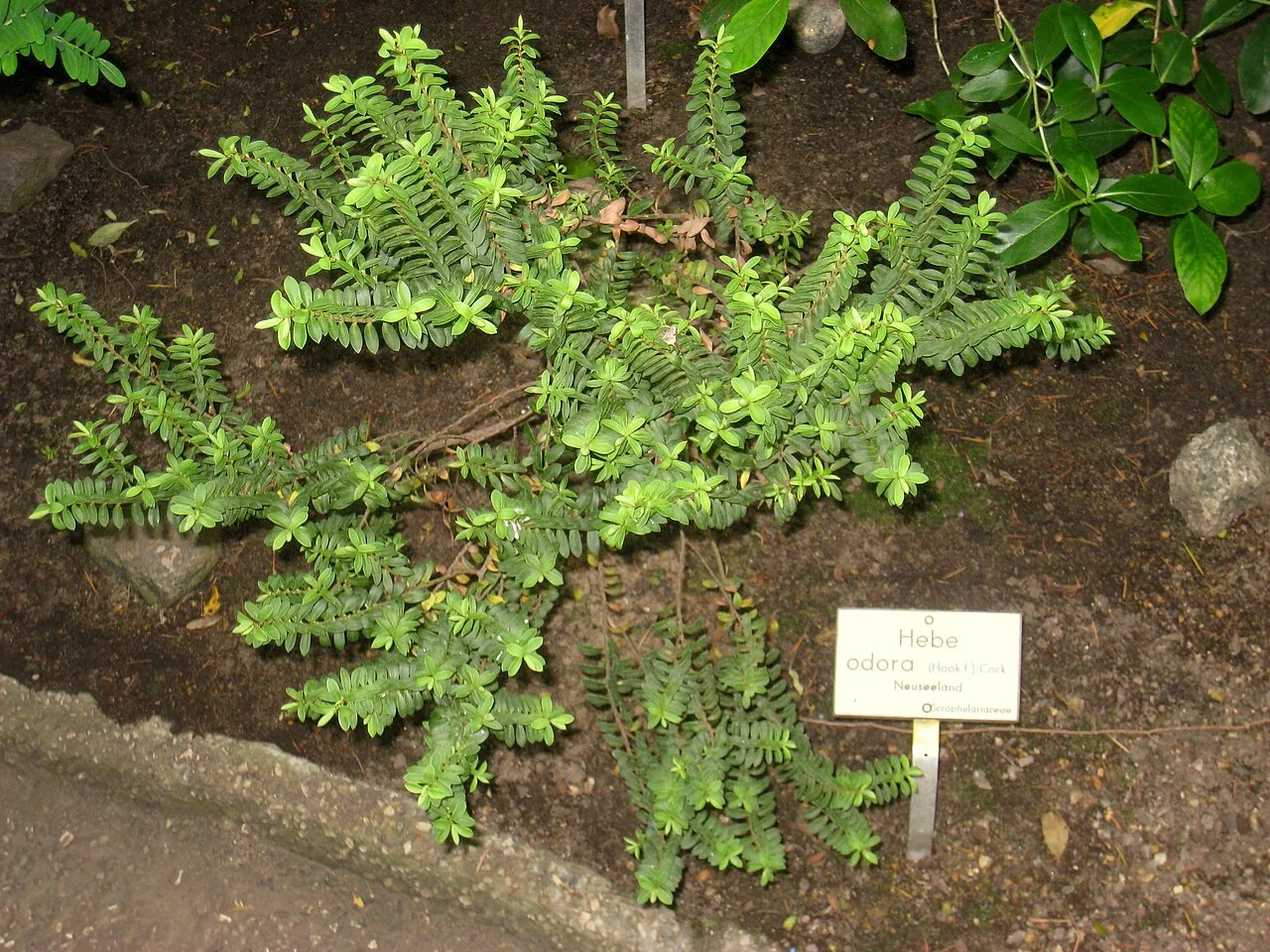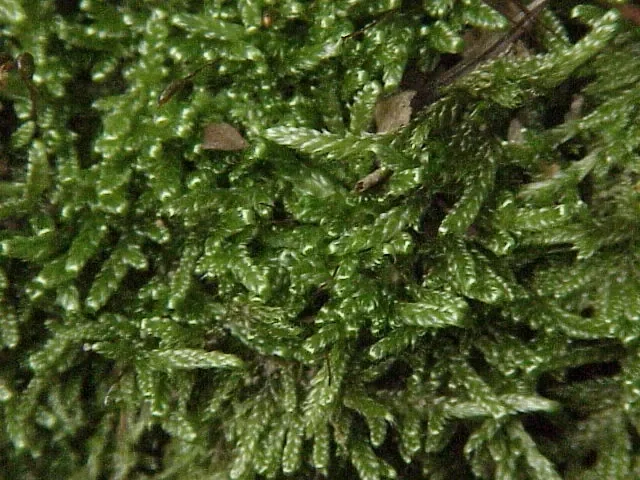
Pōkākā
Elaeocarpus hookerianus
This native plant, known as Pōkākā (scientific name: Elaeocarpus hookerianus), is a remarkable species endemic to New Zealand. It is characterized by its unique features, ecological role, and cultural significance. This comprehensive guide provides detailed information on its care, propagation, and importance within the New Zealand ecosystem. Understanding this plant contributes to the appreciation of our rich biodiversity and heritage. native trees

Plant Description
Elaeocarpus hookerianus, commonly known as Pōkākā, is a native forest tree of New Zealand. It is notable for its distinctive juvenile form, characterized by interlaced branches with tiny leaves, which is sometimes considered an evolutionary adaptation to avoid damage from the extinct moa birds. As it matures, the tree develops larger, light green or olive-green serrated leaves and a dense canopy. It flowers from late spring to early summer (October to January), producing delicate white blossoms that hang in small clusters. These are followed by dark purple, oval-shaped, fleshy fruits that resemble olives, appearing from November to March and sometimes extending to June.
Quick Facts
| Scientific Name | Elaeocarpus hookerianus |
|---|---|
| Height | 15-20m |
| Spread | 3-5m |
| Water Needs | Moderate |
| Light | Full sun to part shade |
| Frost Tolerance | Moderate |
| Salt Tolerance | Moderate |
| Growth Rate | Medium |
| Lifespan | Long |
Climate Best Suited to
Pōkākā (Elaeocarpus hookerianus) is found throughout New Zealand's North, South, and Stewart Islands, thriving in various terrains from valley floors to mountainous areas. It is a cold-tolerant tree, indicating its adaptability to a wide range of New Zealand climates, from temperate coastal regions to cooler, higher altitude environments.
Regional Suitability
| City | Climate Suitability |
|---|---|
| Whangārei | Ideal |
| Auckland | Ideal |
| Hamilton | Ideal |
| Tauranga | Ideal |
| Rotorua | Ideal |
| Gisborne | Ideal |
| New Plymouth | Ideal |
| Napier | Ideal |
| Whanganui | Ideal |
| Palmerston North | Ideal |
| Wellington | Ideal |
| Nelson | Ideal |
| Christchurch | Ideal |
| Dunedin | Moderate |
| Invercargill | Moderate |
Plant Habitat
Pōkākā (Elaeocarpus hookerianus) is found throughout New Zealand's lowland to montane forests, being endemic to the North, South, and Stewart Islands. While common in most regions, it is uncommon north of Auckland. This adaptable tree thrives in a variety of forest environments, from valley floors to mountainous areas, often growing on river terraces and lowland plains in association with kahikatea in damp lowland forests.
The species grows naturally in beech and podocarp forest communities, particularly alongside kahikatea forests. It demonstrates remarkable adaptability to different soil conditions, including poorly drained sites, and can withstand high winds even in insubstantial soils.
Plant Conservation
Pōkākā (Elaeocarpus hookerianus) has a conservation status of "Not Threatened" as of 2023, though it is regionally critical in the Auckland area where it becomes uncommon. The species is endemic to New Zealand and plays an important role in native forest ecosystems, though it remains sparsely distributed throughout the North Island.
While not currently under threat nationally, the regional rarity in northern areas highlights the importance of conservation efforts and habitat protection. The species' role in native forest communities and its ecological relationships with native wildlife make it a valuable component of New Zealand's biodiversity.
Growing Requirements
Soil Requirements
Pōkākā (Elaeocarpus hookerianus) thrives in various terrains, from valley floors to mountainous areas, suggesting adaptability to a range of soil conditions. It prefers moist, well-drained soils, typical of native forest environments. While adaptable, good soil health and drainage will promote optimal growth.
- Tolerates a wide range of soil types from clay to sandy
- Prefers well-draining soils but can handle occasional waterlogging
- Thrives in moderately fertile soils but will grow in poor soils too
- Can tolerate slightly acidic to slightly alkaline pH
- Handles coastal conditions including salt spray
Light Requirements
White maire (Nestegis lanceolata) thrives in a variety of light conditions, from full sun to partial shade. Optimal growth and flowering are typically achieved in locations receiving ample sunlight throughout the day. However, it can also tolerate some shade, especially in hotter climates, where it benefits from protection during the most intense afternoon sun.
- Full sun for optimal growth and form
- Can tolerate partial shade but may develop a leggier form
- At least 6 hours of direct sunlight daily is ideal
- Northern or eastern exposures work well in garden settings
Water Requirements
Pōkākā (Elaeocarpus hookerianus) requires consistent moisture, especially during establishment. As a forest tree, it prefers reliably moist soil conditions and can tolerate periods of high rainfall. While established trees are more resilient, prolonged dry periods may require supplemental watering to maintain health and vigor.
- Moderate watering during establishment (first 1-2 years)
- Drought-tolerant once established
- Can handle periods of soil saturation
- Reduce watering in winter when growth slows
- Signs of overwatering include yellowing leaves and crown rot
Planting Guide
Pōkākā (Elaeocarpus hookerianus) is easily grown from fresh fruit, making propagation straightforward for gardeners. Plant in deep, moist, well-mulched soil for best results, though the species is remarkably adaptable to various soil conditions including heavy and poorly drained soils.
Choose a location that provides full sun to partial shade. While initially a slow grower, pōkākā develops from a tangled mass of wiry twigs with small leaves into a tall tree with a dense canopy. The plant is drought tolerant once established, making it suitable for a range of garden conditions.
Ecological Role
Pōkākā (Elaeocarpus hookerianus) plays a vital ecological role in New Zealand's native forests, serving as both food source and habitat for native wildlife. The tree's dark purple, plum-like fruits ripen from April to June and are dispersed by frugivorous birds, contributing to forest regeneration and seed dispersal.
The distinctive white, lacy, drooping flowers that appear from October to January attract bees and other pollinators, supporting insect biodiversity. As part of lowland forest communities, particularly those dominated by kahikatea, pōkākā contributes to forest structure and provides shelter for various native species.
Uses & Significance
Garden Uses
Pōkākā (Elaeocarpus hookerianus) is a distinctive tree suitable for native gardens, particularly for its unique juvenile form and attractive mature foliage. It is also valuable for revegetation and restoration projects, especially in areas where its natural habitat is being restored. Its cold tolerance makes it suitable for a wide range of New Zealand climates.
- Specimen tree for visual impact
- Suitable for native gardens and restoration projects
- Enhances native garden aesthetics and biodiversity
- Provides architectural accent with its unique structure
- Effective for erosion control on slopes and banks
Pōkākā (Elaeocarpus hookerianus) holds cultural significance, particularly for its unique juvenile growth pattern, which is sometimes considered an evolutionary adaptation to avoid damage from the extinct moa birds. Its wood was traditionally used by Māori for various purposes, including carving and construction, due to its durability.
- Important for tools, weapons, and construction in traditional Māori culture
- Wood is one of New Zealand's hardest native timbers
- Served as a marker tree for trails, boundaries, and sacred sites
Ecological Value
Ecologically, Pōkākā (Elaeocarpus hookerianus) plays a crucial role in New Zealand's forest ecosystems. Its delicate white flowers attract bees, providing an important nectar source, and its dark purple, fleshy fruits provide a food source for native birds, contributing to local biodiversity and seed dispersal. It also provides habitat and shelter for various fauna.
- Provides a vital food source for native birds, especially the kereru
- Offers habitat and nesting sites for various fauna
- Contributes to soil stabilization and nutrient cycling
- Forms natural shelter belts, protecting other species
Landscaping Uses
Pōkākā (Elaeocarpus hookerianus) is an excellent choice for native landscaping projects, particularly in areas requiring wind-tolerant trees. Its distinctive growth habit - transforming from a divaricating juvenile form with tangled branches to a compact, narrow-crowned adult tree - makes it popular with modern landscape gardeners.
The species is ideal for riparian planting and ecological restoration projects, especially in Canterbury plant communities. Its evergreen nature, attractive foliage, and ability to thrive in challenging conditions including heavy soils and windy sites make it valuable for shelter plantings and native garden design.
Seasonal Care Calendar
Spring
In spring, Pōkākā (Elaeocarpus hookerianus) begins its active growth phase, with new foliage emerging and flowering occurring from late spring (October to January). Ensure adequate moisture and monitor for early signs of pests. Light fertilization can support vigorous growth.
- New growth begins with fresh foliage development
- Apply a balanced, slow-release fertilizer if desired
- Excellent time for planting new specimens or dividing offsets
- Monitor for new pest activity and address promptly
Summer
Summer is the peak growing season for Pōkākā (Elaeocarpus hookerianus), with flowering continuing and fruits beginning to develop. Consistent watering is important, especially for young plants, to support vigorous growth and fruit production. Protect from extreme heat if not naturally shaded.
- Flowering typically occurs in early to mid-summer (November-January)
- Water young trees regularly during extended dry periods
- Avoid heavy pruning during the active growing season
Autumn
During autumn, Pōkākā (Elaeocarpus hookerianus) prepares for the cooler months, with its dark purple fruits ripening and providing food for birds. It's also a good time for planting and general garden cleanup, as well as collecting seeds for propagation.
- Fruits or berries develop and ripen (December-February), attracting birds
- Natural leaf shedding occurs as part of its growth cycle
- Good time for planting new specimens to establish before winter
- Clean up fallen leaves if a tidy appearance is desired
Winter
Winter is generally a dormant period for Pōkākā (Elaeocarpus hookerianus). As a cold-tolerant tree, it requires minimal care, though young plants may benefit from protection in very exposed or frosty areas. This is an opportune time for any necessary structural pruning.
- Generally dormant with minimal growth activity
- No special winter protection needed in most mild climates
- Suitable time for structural pruning if required
- Fallen leaves can be left as mulch or removed for tidiness
When to Prune and How Much
Pōkākā (Elaeocarpus hookerianus) generally requires minimal pruning to maintain its natural form and health. Pruning should focus on removing dead or damaged growth and shaping the tree as needed. Formative pruning when young can help establish a strong structure. Major pruning is best done in late winter to early spring before new growth begins.
- Remove dead, damaged, or diseased branches at any time of year
- Light formative pruning when young helps establish good structure
- To create a multi-trunked specimen, cut the main stem to encourage branching
- Fallen leaves can be removed for a tidier appearance, or left as natural mulch
- If necessary, lower branches can be removed to create clearance underneath
- Major pruning is best done in late winter to early spring before new growth
Always use clean, sharp tools for pruning to minimize the risk of disease and ensure clean cuts. The plant often responds well to pruning with vigorous new growth, contributing to a fuller, healthier appearance.
How to Grow Pōkākā
From Seed
Propagating Pōkākā (Elaeocarpus hookerianus) from seed requires patience and proper timing, as this native tree produces viable seed through its distinctive dark purple drupes. Collect fruits when fully ripe in autumn to early winter, typically from March to June, when they have developed their characteristic deep purple coloration and are soft to the touch. The timing is crucial as fresh seed has significantly higher germination rates than stored seed. Remove the fleshy outer layer by gently crushing the fruit and washing the seeds under lukewarm water until all pulp is removed, revealing the hard, pale brown seed coat beneath. The seeds benefit from cold stratification to break dormancy - place cleaned seeds in slightly moist sand or peat moss in sealed containers and refrigerate at 2-4°C for 2-3 months. This mimics the natural winter conditions the species experiences in its native habitat. After stratification, sow seeds in a well-draining seed-raising mix consisting of equal parts sterilized potting mix, perlite, and fine bark chips. Sow seeds at a depth of 1-2cm in individual pots or cellular trays, as seedlings develop deep taproots that dislike disturbance. Place in a warm, bright location with temperatures maintained at 18-22°C and provide consistent moisture without waterlogging. Germination typically occurs 4-8 weeks after sowing, though some seeds may remain dormant for longer periods. Young seedlings exhibit the characteristic juvenile divaricating growth pattern with small, densely branched stems before transitioning to the adult form with larger leaves as they mature.
From Cuttings
Vegetative propagation of Pōkākā through cuttings offers a reliable method for producing plants identical to the parent tree, though success requires attention to specific techniques suited to this native species. Take semi-hardwood cuttings during late summer to early autumn when the current season's growth has begun to harden but still retains some flexibility. Select healthy shoots 12-15cm long from vigorous, disease-free branches, avoiding both very soft growing tips and completely hardened older wood. The cuttings should include 3-4 nodes and be taken from the outer portions of the canopy where growth is most active. Remove all leaves from the bottom half of the cutting and reduce the size of remaining leaves by half to minimize moisture loss while maintaining some photosynthetic capacity. Make a clean cut just below a node using sharp, sterilized secateurs, then lightly wound the base by scraping away small sections of bark to expose the cambium and encourage root formation. Apply rooting hormone containing IBA (indole-3-butyric acid) at 3000-4000ppm concentration to the wounded base, ensuring even coverage. Insert cuttings into a propagation medium consisting of 60% perlite and 40% peat moss or coconut coir, providing excellent drainage while retaining adequate moisture. Maintain high humidity using a propagation tent or misting system while ensuring good air circulation to prevent fungal issues. Keep temperatures steady at 20-24°C with gentle bottom heat if available. Root development typically occurs within 8-14 weeks, indicated by new shoot growth and resistance when gently tugged. Once well-rooted, gradually acclimatize plants to normal growing conditions over 4-6 weeks before transplanting.
Pests & Diseases
Pōkākā (Elaeocarpus hookerianus) is generally a hardy tree with few serious pest and disease issues when grown in suitable conditions. As a native species, it has evolved natural resistances to many local environmental pressures and typically thrives when planted in appropriate habitats.
The main concerns are usually related to establishment phase care, ensuring adequate moisture and protection from extreme weather until the root system is well-developed. Once established, the tree's natural hardiness and adaptation to New Zealand conditions means minimal pest and disease intervention is typically required.
Cultural Significance
Known by its Māori name pōkākā, Elaeocarpus hookerianus has been part of New Zealand's cultural and natural heritage for centuries. The tree's distinctive growth form and fruit have made it recognizable to generations of New Zealanders, and its role in native forest ecosystems connects it to traditional Māori understanding of forest relationships.
The species name "hookerianus" honors Sir Joseph Hooker, the prominent 19th-century botanist who conducted extensive botanical explorations in New Zealand, highlighting the tree's significance in New Zealand's botanical history and scientific heritage.
Bonus Tip
Pōkākā's distinctive juvenile form with its tangled mass of wiry branches and tiny leaves is believed to be an evolutionary adaptation called 'divaricate architecture.' This unusual growth pattern may have evolved as protection against browsing by the now-extinct moa birds. The tree literally transforms as it matures, developing from this impenetrable thicket into an elegant canopy tree with normal-sized leaves - making it one of New Zealand's most remarkable examples of heteroblastic development.







